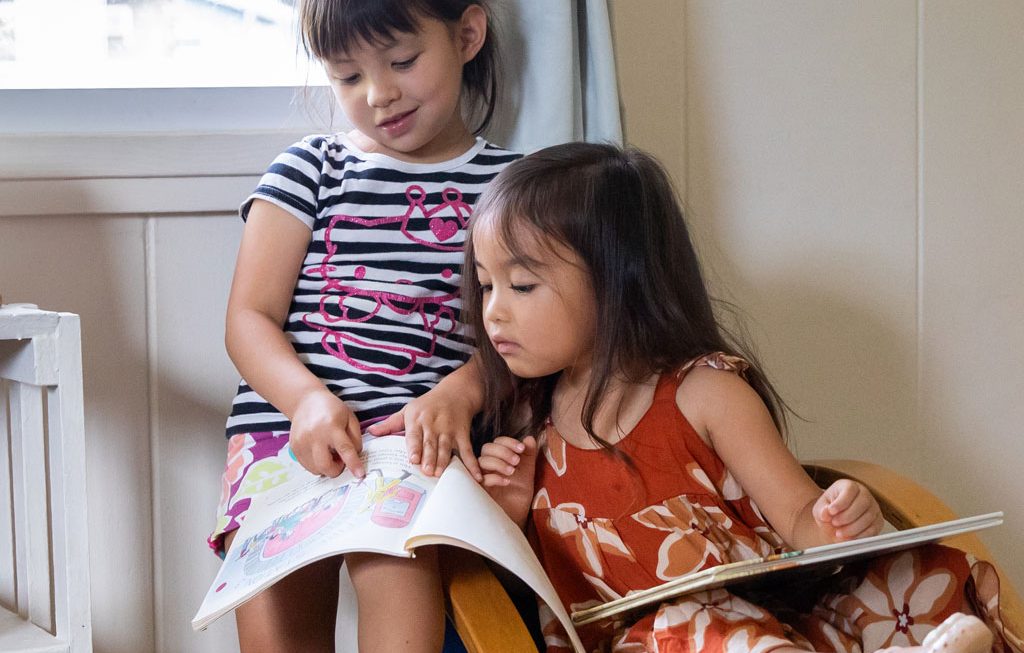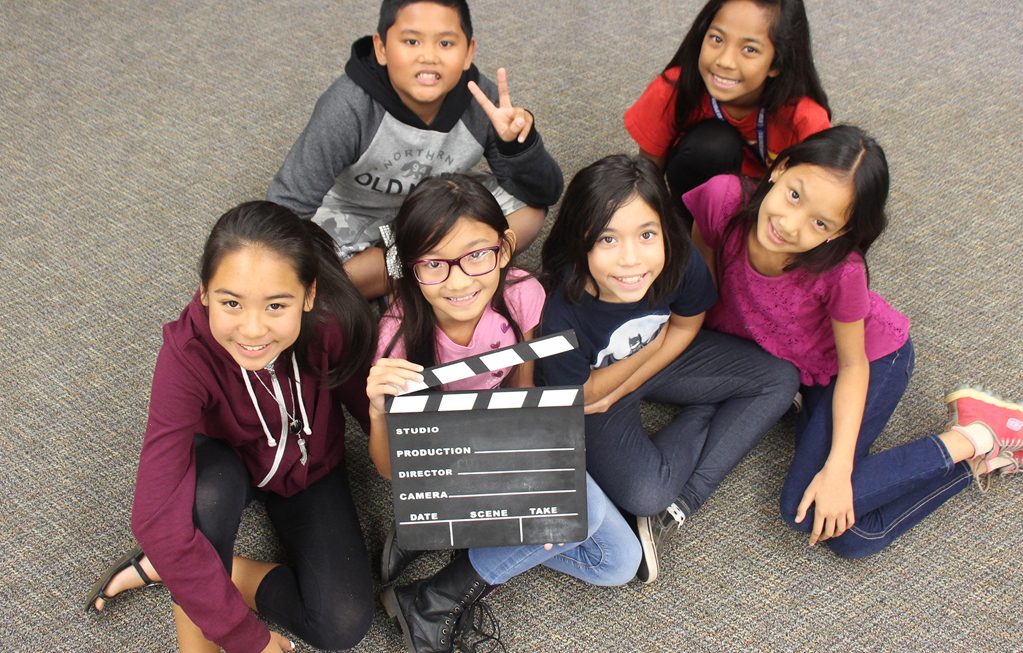by Makayla Dilliner
Did you know your child can speak underwater? Well, not in the traditional way of talking “so to speak”. But in a way known to millions in the world. Sign Language is a form of physical communication– most commonly used by those who are deaf or hard of hearing. From various forms of sign language, 70 million people communicate through unspoken language. By broadening our ever-growing world of communication, sign language may open the doors to a whole new world for you and your child. Whether you are a parent of a deaf child or want to teach your hearing child the language, Aimee Hsia of Kaimuki Christian and Rosalind (Roz) Kia and Tracey Kashiwa of Comprehensive Service Center seek to do just that.
Having worked as an educational interpreter in public schools and now as an ASL Teacher through the Kaimuki Christian program she pioneered, Aimee Hsia shared her insight and expertise on the language. “At Kaimuki Christian, I found a place where I could show students how much God loves us and designed each of us just the way we are,” she explained.
Simply Being a Friend
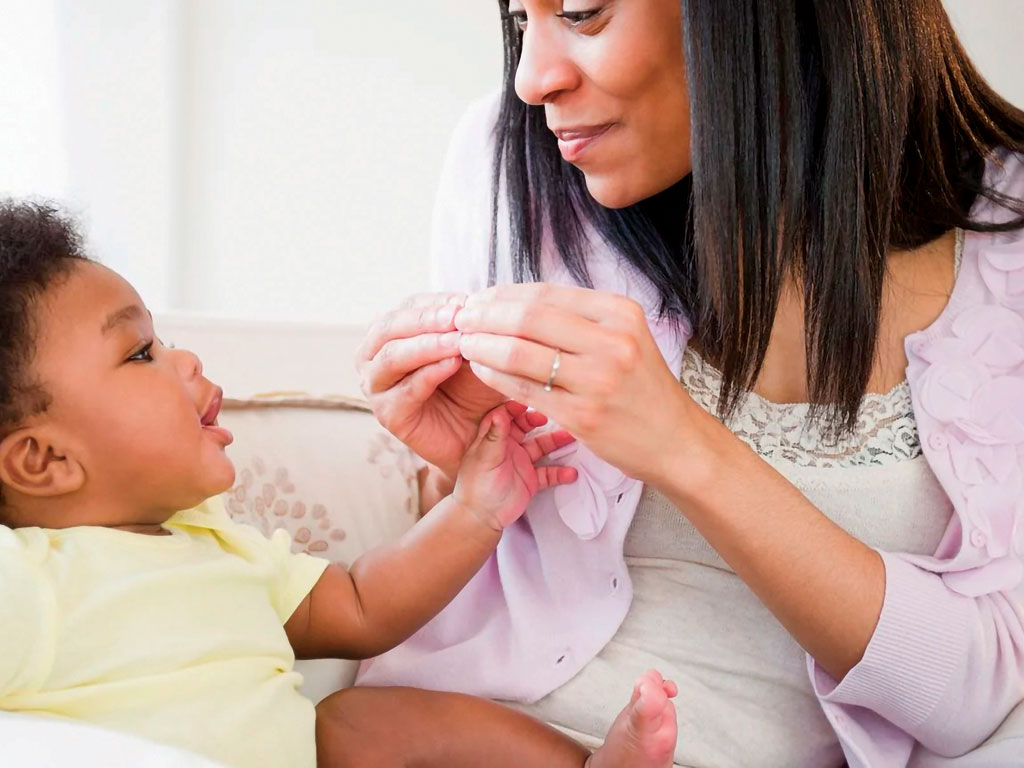
For children all the way to adulthood, it may be difficult to understand those who live differently from them. “Especially since I am not deaf, I prioritize bringing in deaf speakers and coordinating events for students to immerse themselves in the language and culture,” Hsia explained.
Project Support Specialist at the CSC, Tracey Kashiwa, who is deaf herself and has low vision, shared her experience as a speaker in Hsia’s ASL class. “Her students got to meet two successful adults. One is blind with hearing loss, and the other is deaf with vision loss. They saw that we were ‘normal’. We enjoyed meeting them, too,” she explained.
Hsia added that at different stages, just befriending those who are deaf – no matter your ASL skill level – is easier than you think! Pointing and gesturing for young children and texting for older ones can be a subtle yet effective way of communicating. “Younger children are remarkably good at this with a little encouragement.” But it is the responsibility of adults or parents to teach those younger, that being deaf is not a disability that we are trying to fix, instead, it is up to us to fix the way we view those around us. “We can help children to understand we are not trying to “rescue” or “fix” another person to make them more like us.” Instead, it is about realizing that no matter what, we are all worth the same.
Never Too Late To Start
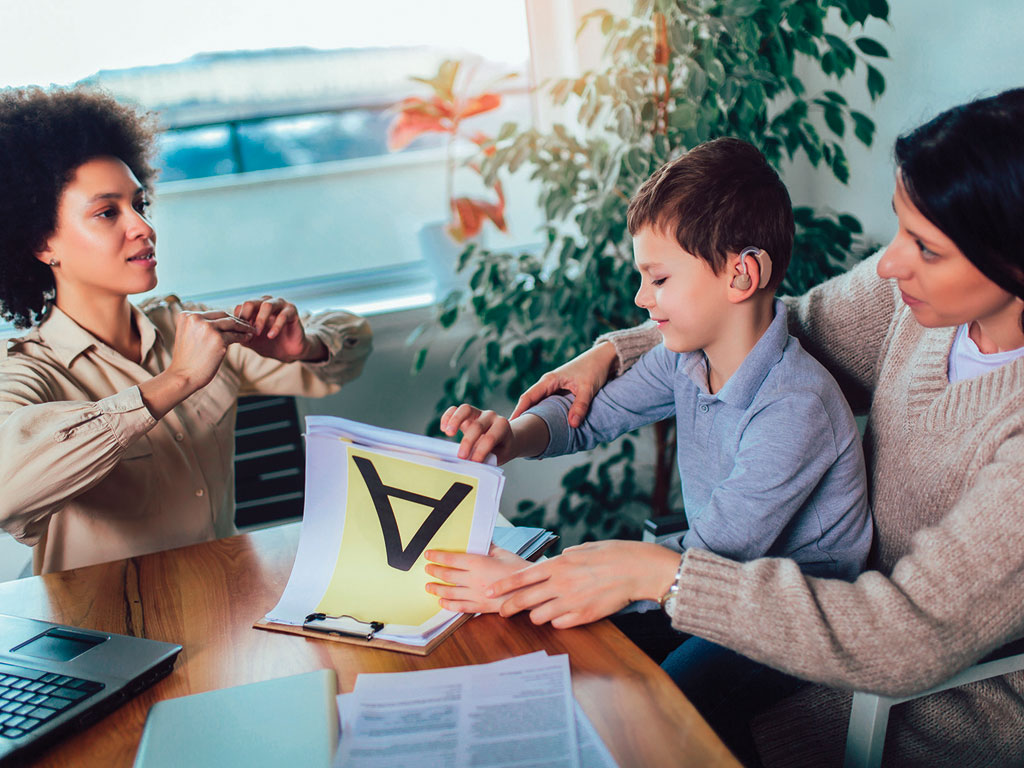
When adding a second language to your child’s skill set, the brain is more than capable of creating new connections with an already strong base to start from. But, for deaf children learning as early as possible may be most imperative. Rosalind (Roz) Kia, Project Coordinator at CSC, shared that “From birth to age three is a critical period for language acquisition because, in the first few years of life, the brain is highly adaptable and capable of forming the neural connections necessary for learning language.” For deaf children, it is this critical period that may also secure their academic and social well-being.
However, Tracey Kashiwa has shown that it is never too late to learn or achieve your goals. With an A.S. degree in Deaf and Hard of Hearing Education and extensive experience working with individuals with disabilities, she shared that she did not learn ASL until almost 20. “I learned at 19. I was “old”, but it was the best thing that happened to me. I really started to live my own life after that,” she explained.
Gain More Than Just A Language
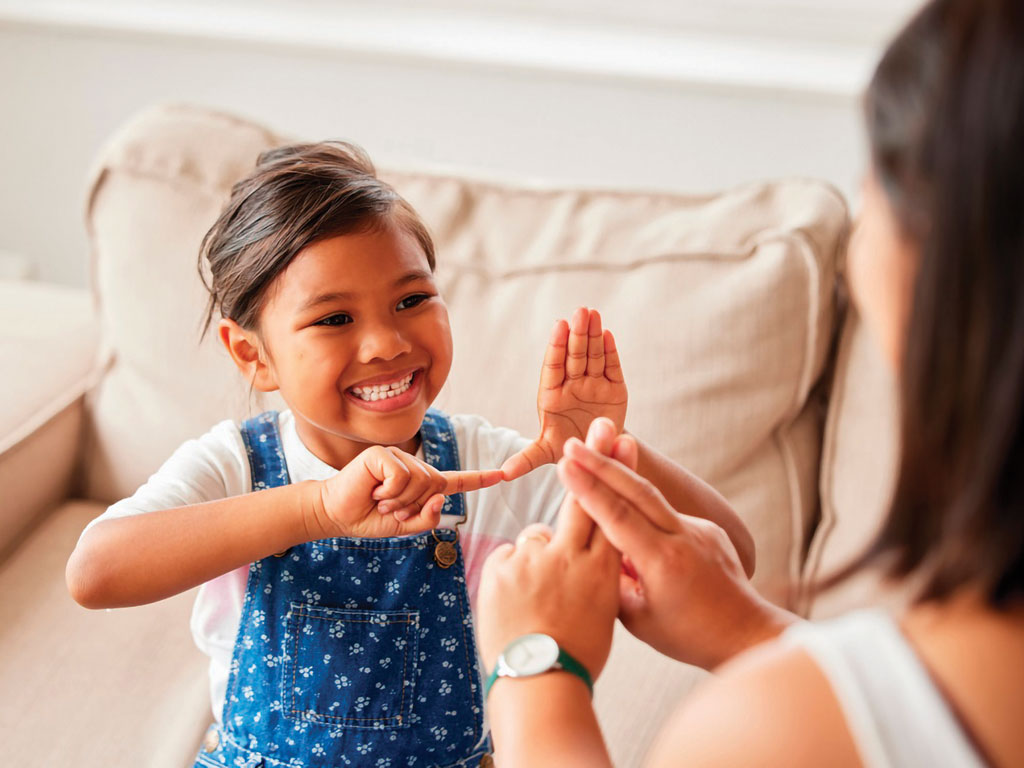
Whether they are deaf or have the ability to hear, instilling in young children that their circumstances do not define them can be the extra step in their journey to success. For parents, with hearing children it may be helpful to teach them that loss of hearing is not a setback but instead a way of living life differently yet obtaining the same amount of satisfaction as everyone else. “It isn’t about hearing loss; it’s about Deaf Gain. By embracing Deaf Gain, parents can help their children see the beauty and strength in diversity and understand that every individual brings valuable perspectives to our world,” Kia stated.
Signed language is more than just a way to speak with others. Instead, it can be the center of culture, love and of life. Communicating with others is how you can show affection, compassion, and care. “Being part of the deaf community means access to a rich culture, a unique language, and shared experiences that foster deep connections and a strong sense of identity,” Kia shared. While many may not realize it, signed language is a culture for many. Just like those deaf and not deaf, it is a way to connect beyond just the surface. “Deaf culture has its own customs, values, and unique perspectives that we who are not native to that culture become guests in a new world,” Hsia stated.
And just like not all forms of communication are universal, the same goes for American Signed Language. Along with British and Japanese or Chinese, Hsia explained there are different forms of signed language out there. We just need to be exposed to them. “The important thing to know is that hand signals we might consider “universal” are often very different in other countries. Try asking a handful of people from a variety of countries how they count on their fingers.,” she explained.
This way of communication and connection can enhance the way of life for both parties. For children, Hsia shed light on the effectiveness of learning sign language through action and adventure. “I like to start with phrases that a child wants to know and is excited to learn. A younger child might want to learn about zoo animals. The Hawaii Deaf community has done events at the zoo. An older child might be interested in sports or hobbies.”
Most Importantly, Fun
As someone who teaches senior-aged students, Hsia has found that it is a no-brainer to include food, another bridge to different lives and forms of communication. “The Deaf Olympics was last March in Turkey. Almost everyone loves to talk about food. I find that planning events around food really breaks down barriers. Learning something that interests you motivates you to use the language to talk to others about it.”
No matter your child’s skill set or ability, centering signed language around an adventure with family over a chore can help make the learning actually stick! Through immersion and family fun, plenty of learning can be accomplished. “Sign up together for classes taught by a Deaf person. Make friends and look for fun family-friendly Deaf events. When a child finds themselves surrounded by signing hands, it won’t be long before they discover their own”.



